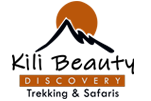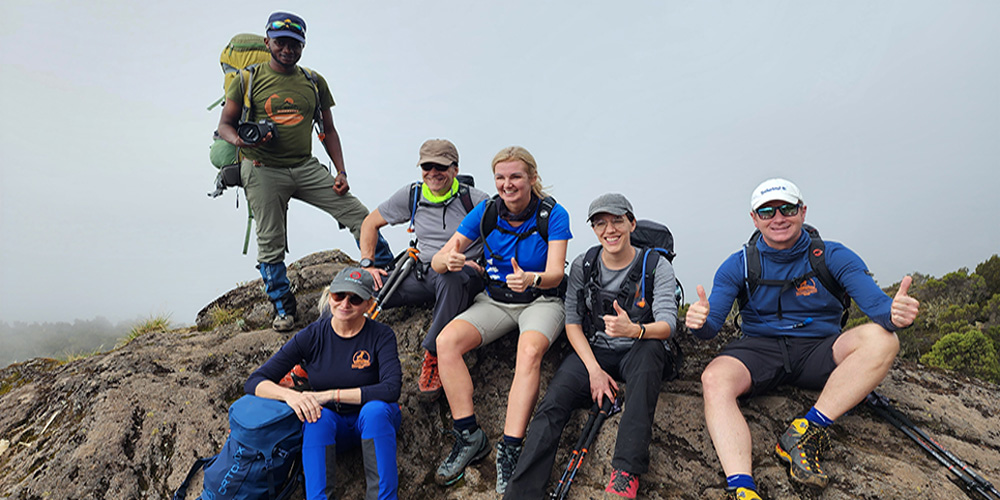What is Altitude Illness or Sickness?
Mt. Kilimanjaro Altitude illnesses are a mix of disorders caused by the body’s inability to adjust to elevations at or above approximate 2,500m/8,000ft above sea level. Yet, physiological changes may be seen as 1,500m/5,000ft. Altitude illness may present as mildly irritating symptoms or as life-threatening problems that will certainly lead to death if unmanaged.
Increasing elevation reduces atmospheric pressure, which in turn reduce the number of oxygen molecules available for each breath.
Over the course of minutes at a given 1,500m, the body compensates through increasing the Heart rate and Respiratory rate and depth. This process is the start of acclimation, or adjustment to higher altitudes. In addition, the body in increases blood pH, requiring increased urination to buffer the change. While necessary, this process also dehydrates a body that is already challenged to maintain to hydration. Over the course of numerous days, the body begins to acclimatize in other ways including an increase in red blood cell production and an increasing ability to efficiently carry and use oxygen
What is Acute Mountain Sickness (AMS)?
AMS is the most common altitude disorder experienced at elevation. Its symptoms most likely result from swelling in and around the base of the brain, and results from reduced oxygen availability due to atmospheric pressure decreases. Severity of AMS varies tremendously, but when severe, I will lead to death if left unmated. The onset is often gradual, and it is easy to confuse with other conditions.
How dangerous is altitude sickness on Mt Kili?
The highest peak of the mountain touches 5,895m in height making it the highest free-standing peak in the world. Therefore, Kilimanjaro Safety is the most important aspect of your climb. While climbing higher than 2000m almost 90% of the climbers feel Mount Kilimanjaro Altitude Sickness. At a higher elevation usually the number of oxygen molecules per breath decreases.
So, when someone attempts to trek the higher peak of a mountain without acclimatizing it causes a kind of fluid build up in the lungs and brain. Due to this during the Climbing of Mount Kilimanjaro while the oxygen level lowers the breathing gets faster and harders.
Due to faster breath heart-beat gets faster. The faster heartbeats cause fluid to leak from tiny blood vessels which result in a potentially dangerous fluid build-up in the lungs and the brain. For any serious ailment, our Kilimanjaro Rescue operation is always ready to evacuate sick person.
What are the signs and symptoms of altitude sickness?
After reaching at an elevation of 1500m /5000ft (a.m.s.l) and above, the body starts reacting to the lower oxygen molecules. It results in feeling some health issues like; mild headache, shortness of breath for a few seconds, or feeling a little drowsy. Sometimes these get worse like; a severe headache that doesn’t respond to painkillers, vomiting, exhaustion, weakness, some people feel insomnia and other people feel excess sleepy.
Travelers can also feel clumsiness, faster heartbeat, hallucination, and gradual loss of consciousness.
Now the question arises – How to prevent or avoid AMS in Kilimanjaro?
One this that you should understand, Climbing Mt Kilimanjaro is not a race, is a once in a life time experience that every climber would like to achieve. The most common reason for AMS is climbing the higher altitude in less time either to save money or time or rushing from one camp to another. Climbing Kilimanjaro is not something very easy thing to do but if you will adhere with your guide, it will be like a piece of cake.
Walk high, sleep low principle: Before climbing this 5,895m height it’s better if you can spend some time at some little higher altitude. It will help your body to get a little acquainted keen to the heights. Climbing Mount Meru, 4566m prior embark on Mount Kilimanjaro climb is a good way to acclimatize your body. This will help to set your body for the big adventure of summiting the highest free-standing mountain on the earth.
Pole Pole pace…!! Pole Pole is a Swahili words which means Slow and steady. That’s what you will be frequently hearing from your guide while trekking, and to enforce this your guide will lead and set up the pace that will help you to adjust smoothly to high elevation. Follow their words, and reach the summit. Slow down your speed, enjoy the scenic routes of the Kilimanjaro as well give your body to get acquainted with the high altitude. If you are new in trekking, don’t take the shorter days itineraries, it won’t allow you to acclimatize properly which increases the chance of getting AMS.
Maintain hydration despite a lack of thirst: Drinking plenty of water or juice or any kind of fluid will help your body to stay hydrated as the higher altitude dehydrates your body. So, staying hydrated will help your body to acclimatize quicker.
Maintain nutrition despite a lack of appetite: Carbohydrates are easier to digest at altitude and may improve oxygen uptake. You need to eat sufficient at every meal and try to have some food loaded with energy and carbohydrate. Mostly at higher altitudes, trekkers don’t feel much hungry and don’t take food as they need which drains their energy. So keep eating to balance your energy
Sleep Properly: Make sure you that you sleep properly on a good mattress and sleeping bag so that you can recharge for the next day trek.
Communicate with your companions/guide. Pay particular attention to those individuals with past histories of altitude illness. Assess for any changes in behavior or ability to walk when at altitude. Altitude illness can mimic and sometimes exacerbate dehydration, hypoglycemia, head injuries, respiratory infections, exhaustion, and even overdoses
Diamox: We recommend that our climbers consider taking acetazolamide (Diamox) to help them acclimatize. Diamox is well-studied and proven safe as a prophylaxis and as a treatment for AMS. It increases respiration and thus increases the amount of oxygen to the brain and other vital organs, especially during sleep. Use125mg acetazolamide (Diamox) twice daily or 240mg once daily.
Evacuation/rescue: Altitude Sickness symptoms and signs should not be avoided and once the symptoms and the signs elevate and the climber does not seem to recover, we start our emergency evacuation procedure and with the help of Kilimanjaro Park rangers and rescue team, the climber is brought down in a stretcher, or a rescue car and if the health situation is very serious, we will request Helicopter at an additional cost.
Final Thoughts/advises
Finally, choose the best experts like Kilibeauty Discovery with many well trained and professional team of guides who are devoted to make sure that the offer you the best experience and your trip become enjoyable as much as possible and your dreams are coming true. Our team are 24/7 available to assist you and are ready to advice you about the best time of the year to start your trek or your wildlife safari and the best route with high success rate without any extra charges. Our incredible team of guides, porters, and chefs to are very friendly, supportive, and professional.
Let’s planning your once in a life time experience with Kilibeauty Discovery now. We promise with big services that will exceed your expectation from arrival date till departure

